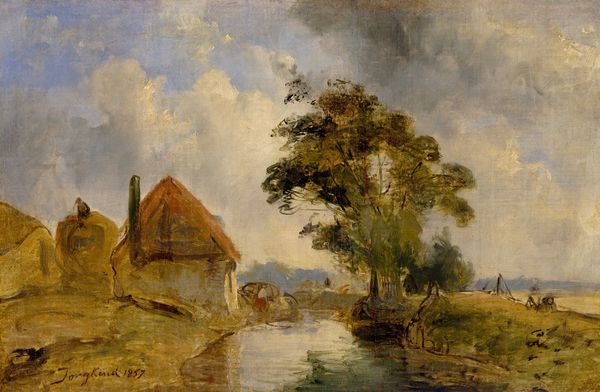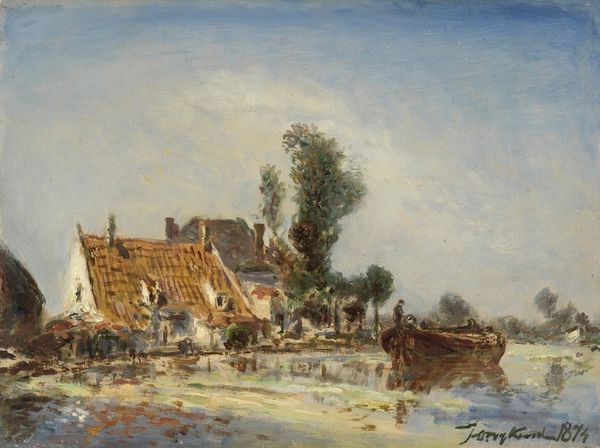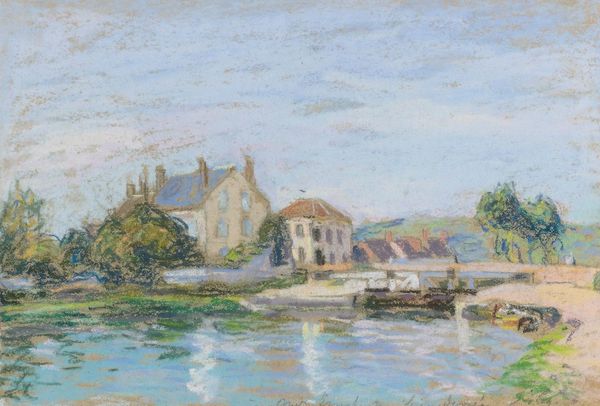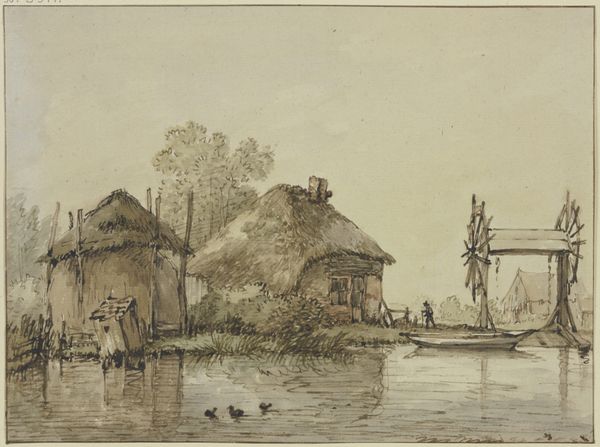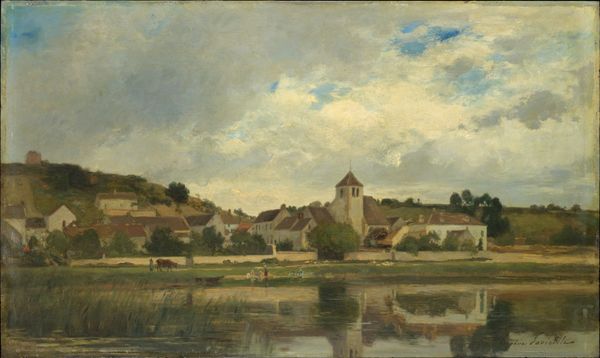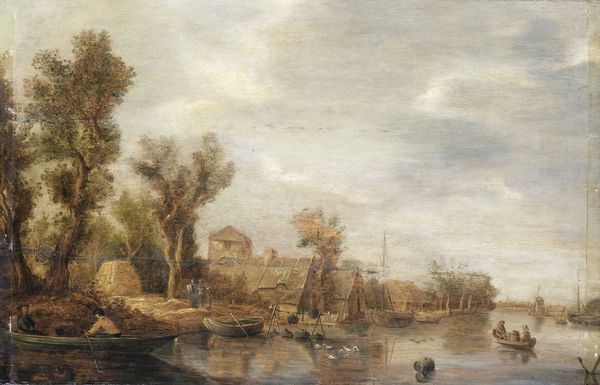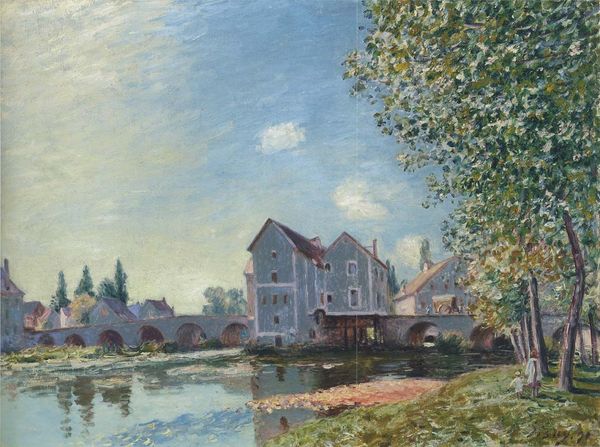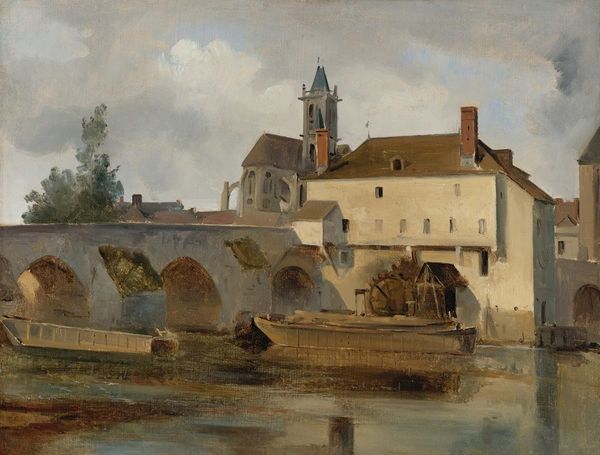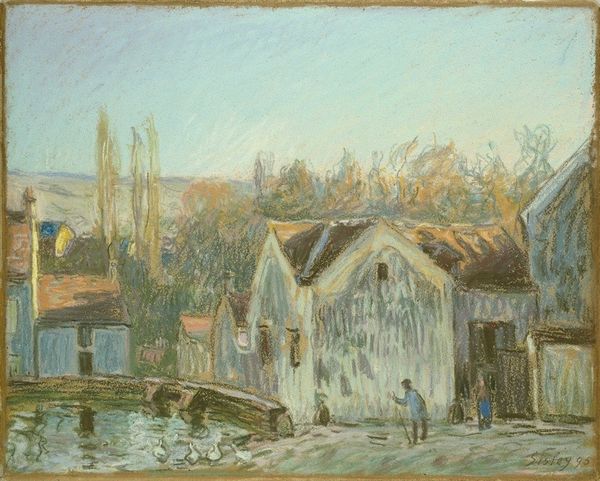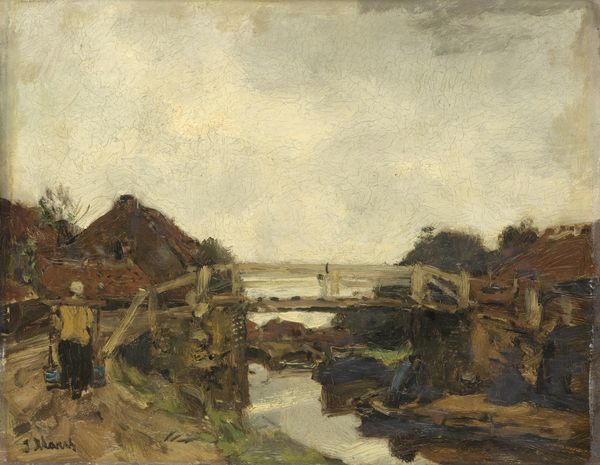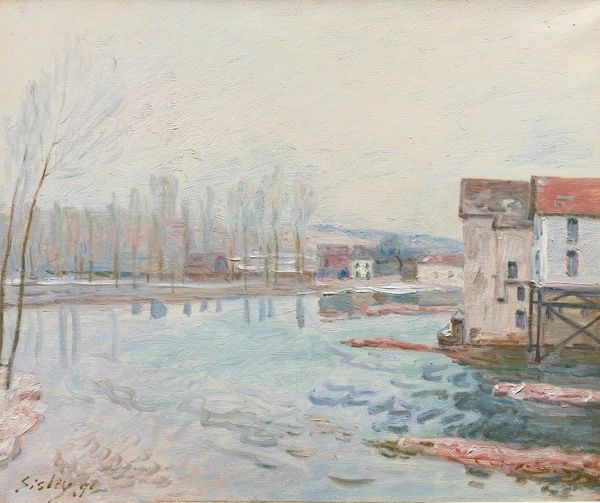
Dimensions: support: 252 x 351 mm
Copyright: CC-BY-NC-ND 4.0 DEED, Photo: Tate
Curator: Edward William Cooke's "Wier's Paper Mill, near Oxford" presents a seemingly tranquil scene. I’m struck by how still the water is. Editor: It’s a bit ramshackle, isn’t it? The textures of the wood and brick suggest a well-worn industrial site, a place shaped by repetitive labor. Curator: Precisely. Cooke's landscapes often engaged with the changing social landscape of England. Paper mills were vital to disseminating information and shaping public opinion. Editor: And consider the raw materials – the wood, the water, the textiles pulped into paper. The whole process, from resource extraction to the final printed product, connects to broader economic systems. Curator: Absolutely. It’s interesting how Cooke chooses to depict this mill as somewhat picturesque, obscuring the harsher realities of labor involved in its operation. A romanticized view perhaps? Editor: Maybe. But I appreciate that it draws attention to the tangible aspects of production. It reminds us that ideas and information always have a material basis. Curator: Yes, a vital point. I see it now not just as a quiet landscape, but a portrait of industrial progress and its impact on the community. Editor: Exactly. Seeing the material processes helps ground the social narratives in a tangible reality.
